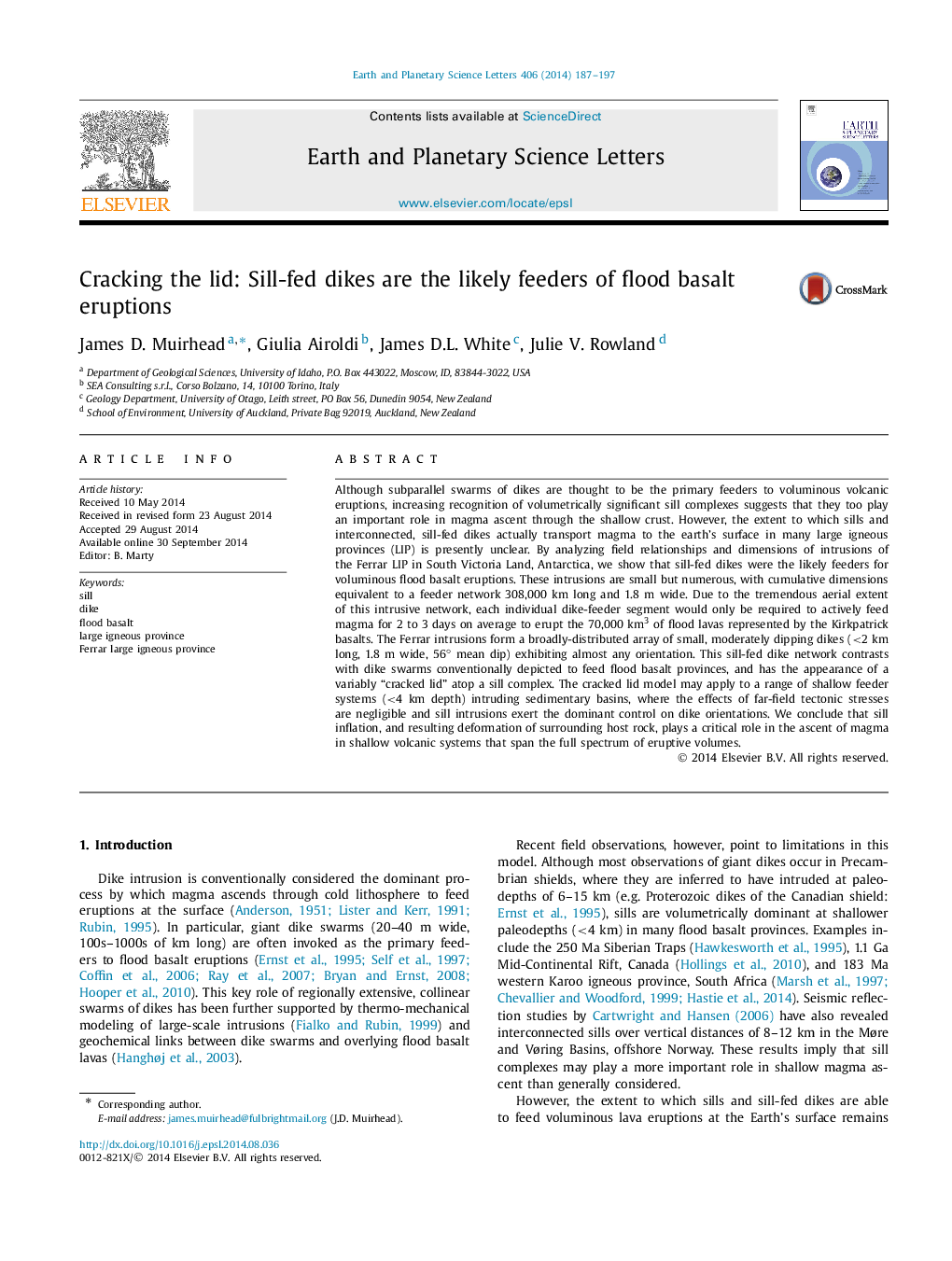| کد مقاله | کد نشریه | سال انتشار | مقاله انگلیسی | نسخه تمام متن |
|---|---|---|---|---|
| 6428980 | 1634750 | 2014 | 11 صفحه PDF | دانلود رایگان |

- First study to constrain the regional distribution of Ferrar LIP dikes.
- A unique network of sill-fed dikes fed voluminous outpourings of lava.
- The Ferrar dike network represents an end-member LIP feeder system.
- Sill-related deformation plays a critical role in magma ascent.
Although subparallel swarms of dikes are thought to be the primary feeders to voluminous volcanic eruptions, increasing recognition of volumetrically significant sill complexes suggests that they too play an important role in magma ascent through the shallow crust. However, the extent to which sills and interconnected, sill-fed dikes actually transport magma to the earth's surface in many large igneous provinces (LIP) is presently unclear. By analyzing field relationships and dimensions of intrusions of the Ferrar LIP in South Victoria Land, Antarctica, we show that sill-fed dikes were the likely feeders for voluminous flood basalt eruptions. These intrusions are small but numerous, with cumulative dimensions equivalent to a feeder network 308,000 km long and 1.8 m wide. Due to the tremendous aerial extent of this intrusive network, each individual dike-feeder segment would only be required to actively feed magma for 2 to 3 days on average to erupt the 70,000 km3 of flood lavas represented by the Kirkpatrick basalts. The Ferrar intrusions form a broadly-distributed array of small, moderately dipping dikes (<2 km long, 1.8 m wide, 56° mean dip) exhibiting almost any orientation. This sill-fed dike network contrasts with dike swarms conventionally depicted to feed flood basalt provinces, and has the appearance of a variably “cracked lid” atop a sill complex. The cracked lid model may apply to a range of shallow feeder systems (<4 km depth) intruding sedimentary basins, where the effects of far-field tectonic stresses are negligible and sill intrusions exert the dominant control on dike orientations. We conclude that sill inflation, and resulting deformation of surrounding host rock, plays a critical role in the ascent of magma in shallow volcanic systems that span the full spectrum of eruptive volumes.
Journal: Earth and Planetary Science Letters - Volume 406, 15 November 2014, Pages 187-197